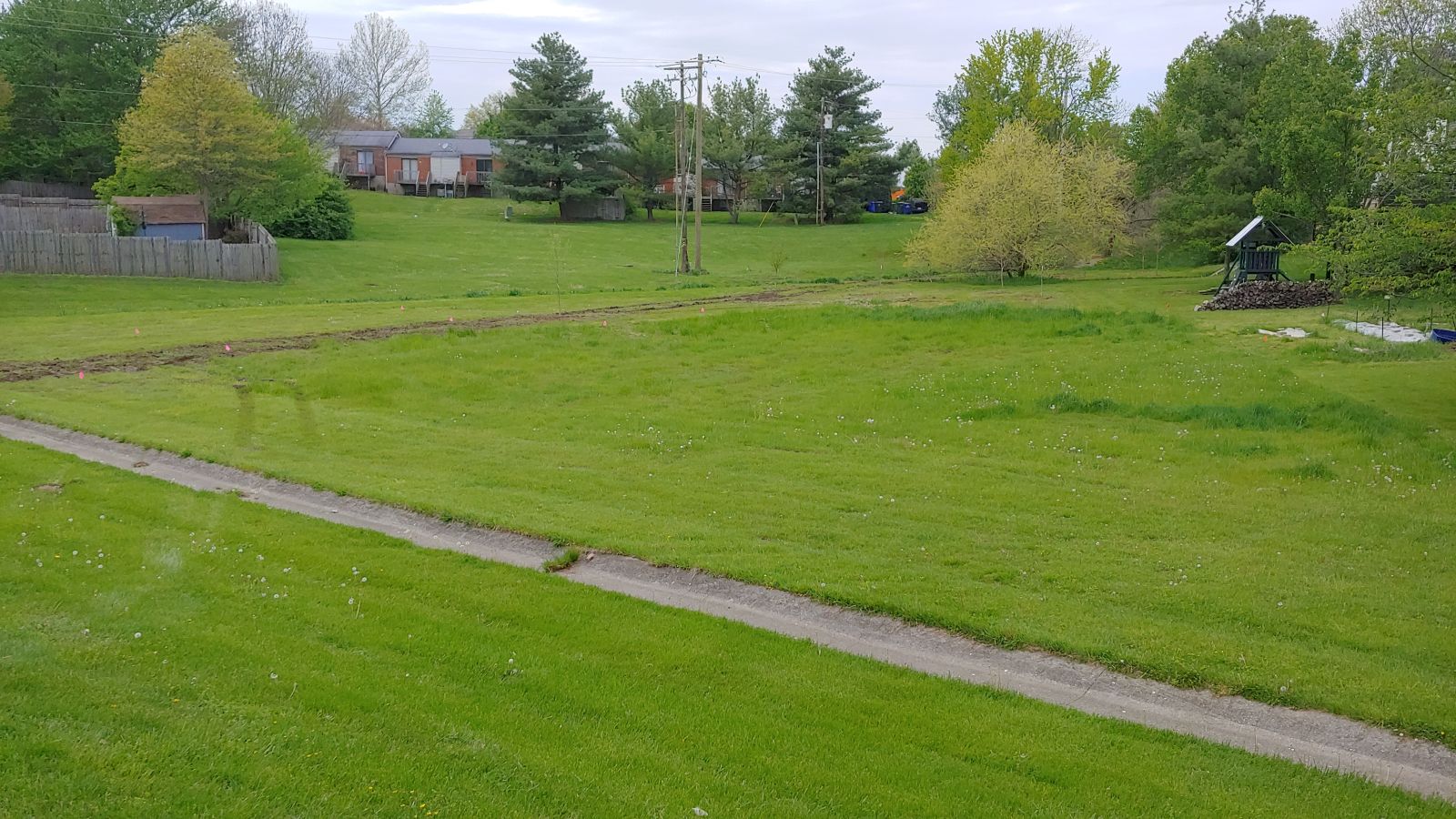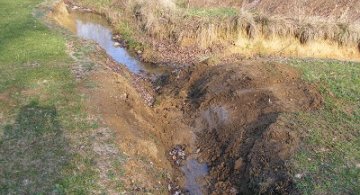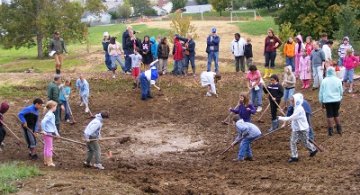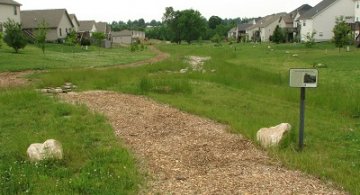Stormwater Solutions
Key Features:
- Retrofitting a stormwater basin
- Planting trees
- Native meadow riparian planting
- Pollinator habitat
- Park bench and educational signage
- Trash rack installed on stormwater structures
- Ongoing stewardship of riparian planting
It’s typical to see old stormwater basins with only mowed of turf grass and the occasional concrete flume along the bottom. In the early days of stormwater management, basins were created to reduce peak discharges and reduce flooding. The mindset was to develop functional spaces that met minimal requirements and operated at minimal costs. These old basins were seen as a liability and unprofitable expense that nobody wanted. Although this was a step forward, it gave little support to water quality, wildlife habitat or other ecological benefits.
Communities are now asking how these engineered spaces can be of greater benefit and service. Can they even be desirable greenspaces? The Lexington Greenspace Commission and Trust has been reconsidering the role of these undesirable lots. Because our community has a limited outward expansion of our urban footprint, our focus is on inward development while also improving the conditions, roles and benefits of urban greenspaces. This perspective reevaluates the critical functions and services of limited spaces. The Lexington Greenspace Commission asked the question: “how can an old stormwater basin serve a greater purpose and become an asset to the neighborhood?” With input from neighbors and LFUCG staff, as well as funding from City Council, a plan was developed and put to action.
EcoGro was hired to convert a mowed turf basin into a native savannah. Invasive exotic species were removed. Screens were installed on stormwater outlets for public safety and collection of litter. Species of native trees, grasses, sedges and wildflowers that thrive in wet conditions were installed to support wildlife as well as beautify the neighborhood. A park bench was placed for bird watching and appreciation of nature’s beauty. Educational signs were posted to increase awareness of how these spaces can be of greater value.
Project Partners
-
Lexington Fayette Urban-County Greenspace Trust, Inc.
-
LFUCG Greenspace Commission
Funding Partner













